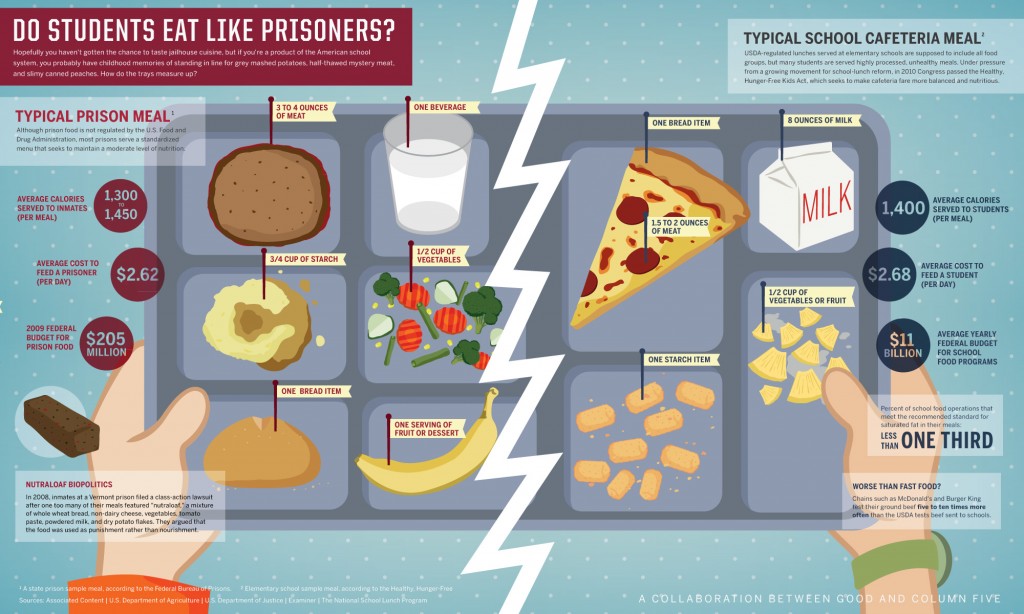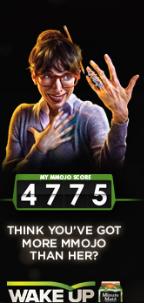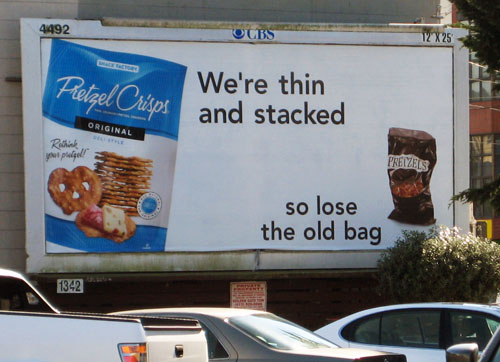I bumped up against two pieces of information today regarding caloric intake. I can’t confirm either, but I found both quite interesting. First, State Info features a map showing the average number of calories consumed each day in different countries across the globe. In the U.S., for example, the average is 3,754, in Argentina it is 2,959, in China it is 2,940, and in Congo it is 1,606. Citizens of some countries, then, eat more than twice as many calories as citizens of others.
The fact that the average in almost every country exceeds the 2,000 calorie goal suggested by the U.S. Food and Drug Administration is fascinating in itself.
I was surprised at the average number of calories consumed in the U.S., where I live. But then I came across the second graphic at GOOD which purports to reveal the number of calories and distribution of food types in the average school lunch and prison meal. The comparison between the two is interesting enough, but I was struck by just how high the numbers were. An average of 1,400 calories in your typical school lunch may very well indeed translate into over 3,000 calories a day.
Lisa Wade, PhD is an Associate Professor at Tulane University. She is the author of American Hookup, a book about college sexual culture; a textbook about gender; and a forthcoming introductory text: Terrible Magnificent Sociology. You can follow her on Twitter and Instagram.









